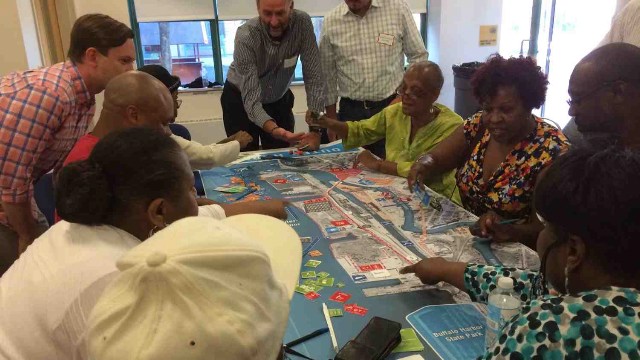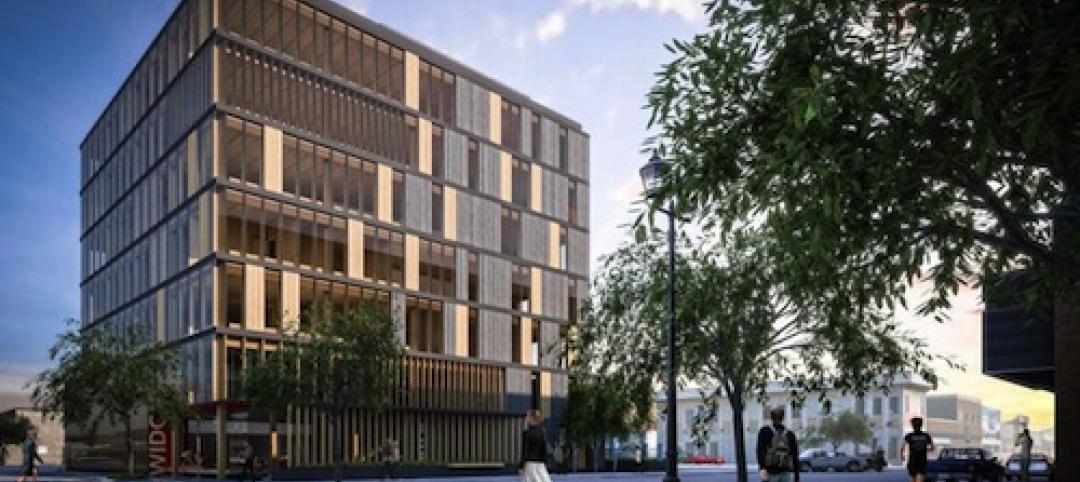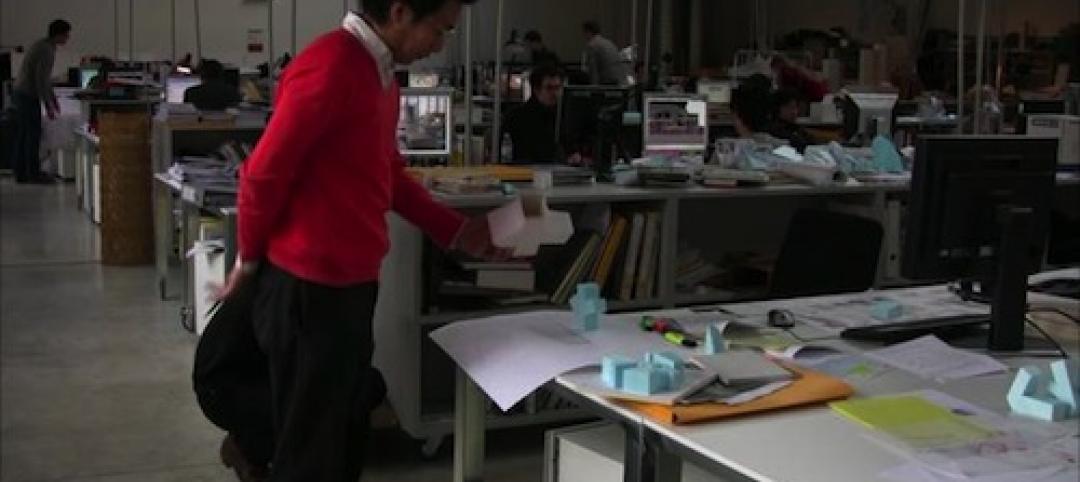Perkins+Will announced on Aug. 18 the firm’s latest planning wins and expanded business for its planning practice, with a focus on work for underserved neighborhoods and regions.
Led by global leaders Janice Barnes and Karen Alschuler, Perkins+Will has broadened its efforts with economic development groups, regional planning agencies, as well as transit agencies, healthcare providers, and mixed-use developers. The work is resulting in comprehensive, long-term plans that will guide new growth in places like Buffalo, N.Y., Kingston, R.I., and Brooklyn, N.Y.
“These new projects reflect Perkins+Will’s commitment to the many New York communities where serious need remains for improved community health and its supporting infrastructure, housing, health services, recreation, and transit,” says Barnes, PhD. “It’s all part of public- and private-sector efforts to knit together the very fabric of our cities, to reinforce and revitalize them, which can only happen through serious community engagement.”
Helping connect community leaders with planning agencies and such client groups as New York’s Economic Development Corp. (EDC), the Erie Canal Harbor Development Corp. (ECHDC), Wyckoff Heights Medical Center, and Community Care of Brooklyn PPS, Perkins+Will is taking a leadership role in shaping major waterfront redevelopment, urban revitalization, transit centers and health districts, says Barnes.
Principals include Barnes, who leads the firm’s Planning+Strategies group, along with: Karen Alschuler, who leads Urban Design; Robin Guenther, FAIA, a global leader in resilience and healthcare; and health district expert Jason Harper, AIA, who recently presented on health district planning in Toronto at the World Congress on Design & Health.
In addition, Perkins+Will has been selected as lead consultant for a number of significant planning commissions and related initiatives. Recently announced projects led by Perkins+Will include:
Buffalo
Perkins+Will has been selected to design a waterfront master plan in Buffalo, including the reuse and redevelopment of 171 acres of the outer Lake Erie harbor. The plan will reconnect downtown Buffalo with its waterfront and create a vibrant destination of community, commerce and culture. The client, ECHDC, is working with the firm’s New York and San Francisco offices on three development alternatives for the land, with significant community engagement and public participation. Led by Alschuler and Dennis Dornan, a senior planner in the firm’s urban design group, the result will be a complete land-use framework, including financial projections and an operations plan, to encourage active use of the outer harbor while enhancing public access and linking it to downtown and its Canalside district. Thomas Dee, the CEO of ECHDC, noted that Perkins+Will has a track record of successful experience with cold-weather waterfronts – in Ottawa and Toronto, among others.
The firm is also involved with projects that address legacy brownfield remediation to reimagine post-industrial sites, such as their new project in Kingston, N.Y. The firm’s senior planner, Amy Thompson, notes that this work reflects Perkins+Will’s long history of leadership in urban design and environmental stewardship nationally.
Health Districts
The firm is also working on a range of planning projects where the goal is to create a regional health district – a livable, walkable neighborhood that focuses on wellness, prevention and overall community health through network partnering and pooled resources. Perkins+Will’s Harper, who frequently lectures and publishes on the topic, has also worked to advance urban design and planning criteria for health districts with ULI, the Congress for New Urbanism, EcoDistricts, AIANY, the New York Academy of Medicine, and other groups. Harper, along with Basak Allen and David Green, advocates from both the grassroots and global perspective in his efforts to create healthier communities.
Brooklyn
One of those budding health districts may soon be in Brooklyn, where Barnes recently chaired a ULI workshop to spark new implementation strategies for a transit-oriented development (TOD) zone called Broadway Junction. Barnes and Harper, along with Daniel Windsor, senior urban planner at Perkins+Will, recently partnered with a panel of experts and community leaders to identify the short-, mid- and long-term “enabling projects” for the Broadway Junction community, The ULI New York's Technical Assistance Panel, or TAP, is a volunteer effort to provide urban planning strategies for targeted communities. The Broadway Junction community is within the catchment area of Wyckoff Heights Medical Center, where Perkins+Will is also at work assisting the medical center on the development of a strategy for a “health improvement district.”
The TAP will make recommendations to the New York City Department of City Planning as well as to local community board and nonprofits, “to incentivize large-scale and mixed-use development along key blocks … and create new employment, retail, and entertainment opportunities for surrounding residential communities,” says ULI New York. In parallel, and guided by Perkins+Will’s efforts, Wyckoff is identifying opportunities to partner with healthcare providers in the Broadway Junction community as well as in their larger catchment area, to increase access to healthcare services for this underserved area, which has some of the highest asthma and diabetes rates in the city.
Transit Oriented Developments of TODs (various locations)
In addition to Broadway Junction, Perkins+Will planners have been engaged for other large, mixed-use TOD plans in North America to spur economic revitalization in dozens of underserved communities. Recent TOD projects by the firm include the award-winning Treasure Island Master Plan + Urban Design project in San Francisco, the Beltline Corridor Design in Atlanta, and Station Park Green in San Mateo, Calif.
Resiliency (various locations)
Perkins+Will has worked with national, state and city leaders on regional plans and facility specific planning, design, and construction projects to identify and implements techniques for reducing climate- and weather-related risks to communities and the built environment. These planning and architecture projects examined how underserved communities can become more resilient to – and recover more swiftly from – the disastrous impacts of future severe weather events. Guenther, one of the firm’s experts on resilience, helps prepare health organizations for increased climate risks and severe weather. Guenther will speak on the topic at the conference“Building the Resilient City,” to be held Sept. 4-5 in San Francisco by the Urban Land Institute (ULI).
Related Stories
| May 1, 2013
A LEGO lover's dream: Guide to building the world's iconic structures with LEGO
A new book from LEGO master builder Warren Elsmore offers instructions for creating scale models of buildings and landmarks with LEGO.
| May 1, 2013
New AISC competition aims to shape the future of steel
Do you have the next great idea for a groundbreaking technology, model shop or building that could potentially revolutionize the future of the steel design and construction industry? Enter AISC's first-ever Future of Steel competition.
| May 1, 2013
Data center construction remains healthy, but oversupply a concern
Facebook, Amazon, Microsoft, and Google are among the major tech companies investing heavily to build state-of-the-art data centers.
| May 1, 2013
Groups urge Congress: Keep energy conservation requirements for government buildings
More than 350 companies urge rejection of special interest efforts to gut key parts of Energy Independence and Security Act
| May 1, 2013
World’s tallest children’s hospital pushes BIM to the extreme
The Building Team for the 23-story Lurie Children’s Hospital in Chicago implements an integrated BIM/VDC workflow to execute a complex vertical program.
| Apr 30, 2013
Healthcare lighting innovation: Overhead fixture uses UV to kill airborne pathogens
Designed specifically for hospitals, nursing homes, child care centers, and other healthcare facilities where infection control is a concern, the Arcalux Health Risk Management System (HRMS) is an energy-efficient lighting fixture that doubles as a germ-killing machine.
| Apr 30, 2013
First look: North America's tallest wooden building
The Wood Innovation Design Center (WIDC), Prince George, British Columbia, will exhibit wood as a sustainable building material widely availablearound the globe, and aims to improve the local lumber economy while standing as a testament to new construction possibilities.
| Apr 26, 2013
Apple scales back Campus 2 plans to reduce price tag
Apple will delay the construction of a secondary research and development building on its "spaceship" campus in an attempt to drive down the cost of developing its new headquarters.
| Apr 26, 2013
Documentary shows 'starchitects' competing for museum project
"The Competition," a new documentary produced by Angel Borrego Cuberto of Madrid, focuses on the efforts of five 'starchitects' to capture the design contract for the new National Museum of Art of Andorra: a small country in the Pyrenees between Spain and France.
| Apr 26, 2013
Solving the parking dilemma in U.S. cities
ArchDaily's Rory Stott yesterday posted an interesting exploration of progressive parking strategies being employed by cities and designers. The lack of curbside and lot parking exacerbates traffic congestion, discourages visitors, and leads to increased vehicles emissions.
















